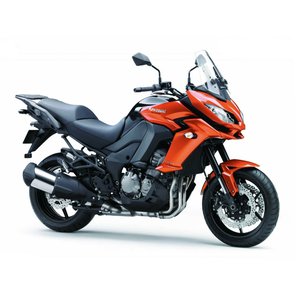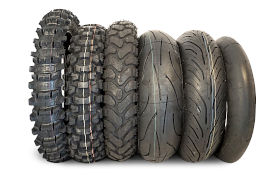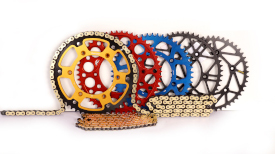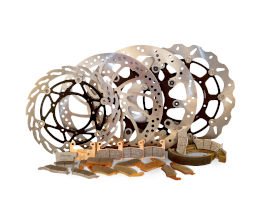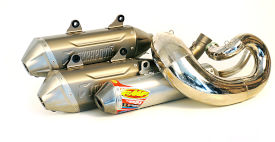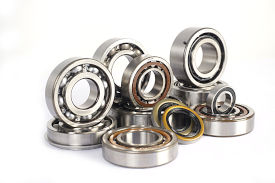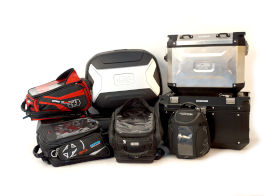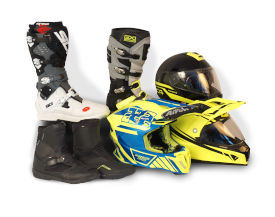Kawasaki KLZ 1000 Versys (2015-2018): The Swiss Army Knife of Sport Touring
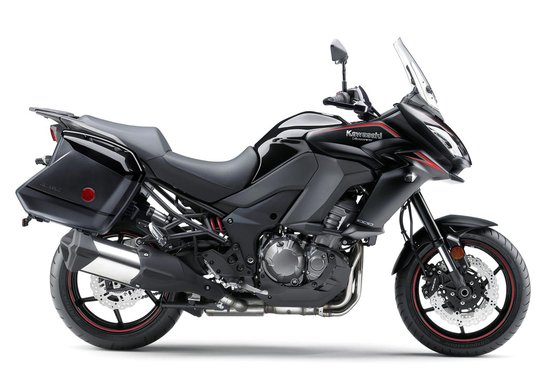
Introduction
The Kawasaki Versys 1000 isn’t just a motorcycle—it’s a declaration of independence. Designed to thrive on everything from serpentine mountain passes to cross-continental highways, this 2015–2018 generation strikes a rare balance between sportbike adrenaline and touring comfort. As a rider who’s spent hours in its saddle, I can confirm: this is a machine that rewards curiosity. Whether you’re carving corners or commuting, the Versys 1000 feels like it’s constantly whispering, “What’s next?” Let’s dissect why this inline-four adventurer remains a cult favorite among riders who refuse to be pigeonholed.
Engine Performance: The Heart of a Predator (That Purrs)
At the core of the Versys 1000 lies its 1,043cc inline-four engine—a masterpiece of versatility. With 118 hp @ 9,000 rpm and 102 Nm (75.2 lb-ft) of torque @ 7,700 rpm, this powerplant is less about raw aggression and more about usable ferocity.
Key Highlights:
- Low-Mid Range Dominance: The real magic happens between 4,000–8,000 rpm. Crack the throttle at 60 km/h (37 mph) in sixth gear, and the bike surges forward without hesitation, thanks to Keihin’s 38mm throttle bodies and oval sub-throttles. It’s like having a friendly grizzly bear on a leash—powerful but predictable.
- Intoxicating Soundtrack: The intake roar under acceleration is symphonic, blending with a bass-heavy exhaust note from the under-engine pre-chamber. At highway speeds, it settles into a muted hum, sparing your ears from fatigue.
- Assist & Slipper Clutch: A 30% lighter lever pull (compared to older models) makes stop-and-go traffic tolerable, while the anti-hop function saves your bacon during aggressive downshifts.
Metric Muscle: 0–100 km/h (0–62 mph) arrives in ~3.5 seconds, with a top speed electronically limited to 225 km/h (140 mph). Fuel efficiency hovers around 5.5 L/100 km (43 mpg), granting a 360 km (224 mi) range from its 21L tank.
Handling & Comfort: Dancing with a Titan
Chassis & Suspension
The aluminum twin-tube frame and 43mm inverted KYB fork (150mm travel) strike a Goldilocks balance: stiff enough for spirited riding, plush enough to iron out potholes.
- Riding Position: The 840mm (33") seat height suits average riders, though tip-toeing is inevitable for shorter legs. The wide handlebar and low footpegs create a relaxed, upright posture—ideal for 8-hour days. Passengers get generous grab rails and a sculpted seat.
- Weight Management: At 250 kg (551 lbs) wet, the Versys hides its heft well. Flicking it through switchbacks feels akin to guiding a determined bison—it’s not a supersport, but it’s shockingly agile for its size.
- Braking: Dual 300mm petal discs up front (4-piston calipers) and a 250mm rear disc deliver confident stops, aided by Bosch ABS. Trail-braking into corners feels natural, with minimal nose dive.
Pro Tip: Dial in 2.5 bar (36 psi) front / 2.9 bar (42 psi) rear tire pressures for optimal grip and longevity on its 120/70-ZR17 and 180/55-ZR17 rubber.
Features & Technology: Touring with a Techie Edge
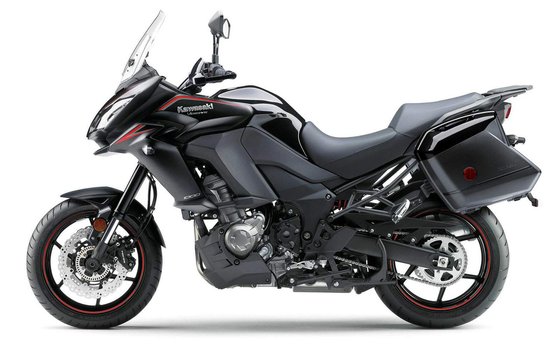
Standout Features:
- Adjustable Windscreen: Tool-free height adjustment (75mm range) deflects windblast effectively, though taller riders might crave an aftermarket extension.
- Kawasaki Quick Release (KQR) Saddlebags: The 28L panniers are weatherproof and helmet-friendly. Remove them in seconds, leaving no unsightly brackets.
- Traction Control & Power Modes: Three-level KTRC (including a rain mode) and Full/Low power settings let you tame the beast on slick roads.
- Instrument Cluster: The analog tach + digital LCD combo is utilitarian but legible. Later models added a gear position indicator—a godsend for new riders.
Missing Link: Cruise control arrived post-2018, but aftermarket throttle locks (like Kaoko) can retrofit this era’s models.
Competition: How the Versys Stacks Up
1. Yamaha Tracer 900 GT (2018)
- Pros: 180kg (397 lbs) wet weight, 30% cheaper.
- Cons: CP3 triple lacks the Versys’ top-end punch; suspension feels budget-tier.
2. Honda Africa Twin (CRF1000L)
- Pros: Off-road prowess, rugged styling.
- Cons: 18kg (40 lbs) heavier, lethargic on pavement compared to the Versys’ sporty reflexes.
3. BMW F 800 GT
- Pros: Bavarian build quality, shaft drive.
- Cons: Parallel-twin engine feels anemic next to Kawasaki’s inline-four; cramped ergonomics.
Verdict: The Versys 1000 dominates for riders prioritizing road-biased versatility. It’s less “adventure” and more “aggressive tourer”—a distinction that works in its favor.
Maintenance: Keeping the Beast Happy
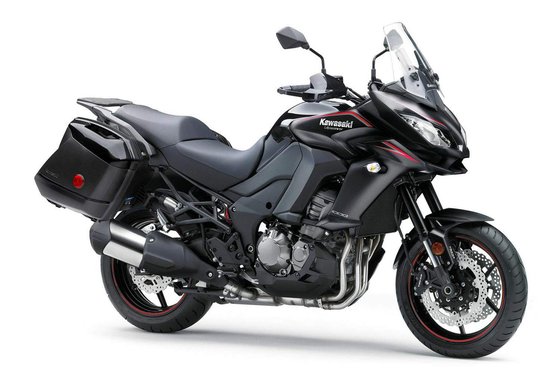
Critical Service Points:
- Valve Adjustments: Every 42,000 km (26,000 mi). Clearance specs:
- Intake: 0.15–0.24mm (0.006–0.009")
-
Exhaust: 0.22–0.31mm (0.009–0.012")
Pro Tip: Swap stock shims for MOTOPARTS.store’s titanium kits to reduce future labor costs. -
Oil Changes: 3.8L (4 quarts) of 10W-40 (API SG+) every 6,000 km (3,700 mi). Consider MOTOPARTS.store’s synthetic blends for extended drain intervals.
-
Chain Care: The 116-link DID chain needs cleaning every 500 km (310 mi). Our X-Ring Chain Kit includes a Scottoiler-compatible sprocket set (15T/43T).
-
Brake Fluid: Flush with DOT 4 annually. Sticky calipers? MOTOPARTS.store’s stainless steel brake lines improve feel.
-
Cooling System: 2.6L (2.75 quarts) of ethylene glycol coolant. Inspect hoses for cracks during tire changes.
Cost-Saver: DIY spark plug swaps (NGK CR9EIA-9, gap 0.8–0.9mm) take 45 minutes—far cheaper than dealership rates.
Conclusion: The All-Road Sovereign
The 2015–2018 Kawasaki Versys 1000 isn’t perfect—its windscreen could be taller, and the lack of cruise control stings—but it’s a machine that earns loyalty. This is a bike for riders who want to chase horizons without sacrificing the thrill of the twisties. Whether you’re upgrading suspension with MOTOPARTS.store’s cartridge kits or bolting on panniers for a transcontinental jaunt, the Versys 1000 remains a blank canvas for adventure.
In a world of hyper-specialized motorcycles, this Kawasaki is a refreshing reminder that sometimes, the best tool is the one that does everything.
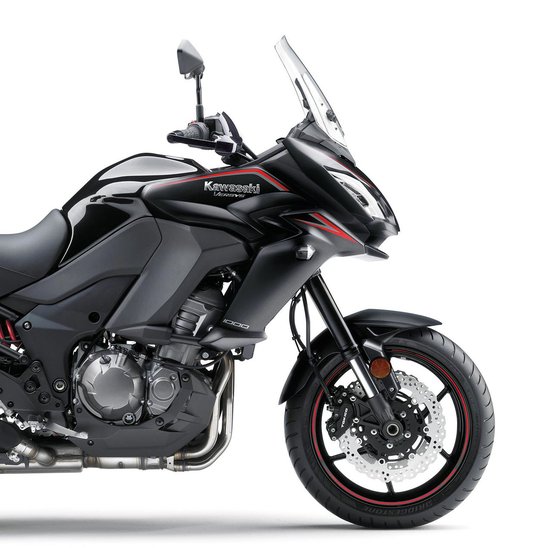


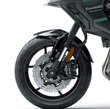




Specifications sheet
| Engine | |
|---|---|
| Stroke: | Four-stroke |
| Max power: | 88 kW | 118.0 hp |
| Idle speed: | 1100 ± 50 rpm |
| Max torque: | 102 Nm |
| Fuel system: | Fuel injection (ø38 mm Keihin throttle bodies with oval sub-throttles) |
| Lubrication: | Forced lubrication, wet sump |
| Max power @: | 9000 rpm |
| Spark plugs: | NGK CR9EIA-9 |
| Displacement: | 1043 ccm |
| Max torque @: | 7700 rpm |
| Configuration: | Inline |
| Cooling system: | Liquid cooled |
| Spark plug gap: | 0.85 |
| Compression ratio: | 10.3:1 |
| Number of cylinders: | 4 |
| Dimensions | |
|---|---|
| Wheelbase: | 1520 mm (59.8 in) |
| Wet weight: | 249 |
| Seat height: | 840 mm (33.1 in) |
| Overall width: | 895 mm (35.2 in) |
| Overall height: | 1400 mm (55.1 in) |
| Overall length: | 2240 mm (88.2 in) |
| Ground clearance: | 150 mm (5.9 in) |
| Fuel tank capacity: | 21 L (5.5 US gal) |
| Drivetrain | |
|---|---|
| Clutch: | Wet multi-disc with assist & slipper function |
| Final drive: | chain |
| Gear ratios: | ['1st 2.692', '2nd 1.950', '3rd 1.529', '4th 1.304', '5th 1.136', '6th 0.958'] |
| Chain length: | 116 |
| Transmission: | 6-speed manual |
| Rear sprocket: | 43 |
| Front sprocket: | 15 |
| Primary reduction ratio: | 1.627 (83/51) |
| Maintenance | |
|---|---|
| Engine oil: | 10W-40 |
| Coolant capacity: | 2.6 |
| Rear brake fluid: | DOT 4 |
| Fork oil capacity: | 1.2 |
| Front brake fluid: | DOT 4 |
| Engine oil capacity: | 3.8 |
| Engine oil change interval: | Every 5000 km or 2 years |
| Valve clearance (intake, cold): | 0.15–0.24 mm |
| Valve clearance check interval: | 24,000 km (15,000 mi) |
| Valve clearance (exhaust, cold): | 0.22–0.31 mm |
| Recommended tire pressure (rear): | 2.9 bar (42 psi) |
| Recommended tire pressure (front): | 2.5 bar (36 psi) |
| Additional Features | |
|---|---|
| ABS: | Standard |
| Lighting: | LED headlights (2018+) |
| Power modes: | Full/Low |
| Cruise control: | Available on 2018+ models |
| Instrumentation: | Analog tachometer with LCD display |
| Traction control: | 3-mode KTRC |
| Chassis and Suspension | |
|---|---|
| Rake: | 27° |
| Frame: | Aluminium twin-tube |
| Trail: | 107 mm (4.2 in) |
| Rear tire: | 180/55 z-17 |
| Front tire: | 120/70 z-17 |
| Rear brakes: | Single 250 mm petal disc with 1-piston caliper (ABS) |
| Front brakes: | Dual 300 mm petal discs with 4-piston calipers (ABS) |
| Rear suspension: | Horizontal Back-link monoshock with adjustable rebound damping and remote preload |
| Front suspension: | 43 mm inverted fork with stepless rebound damping and spring preload adjustment |
| Rear wheel travel: | 150 mm (5.9 in) |
| Front wheel travel: | 150 mm (5.9 in) |



